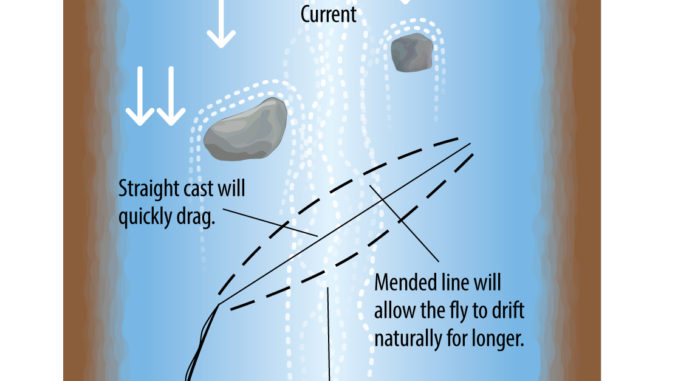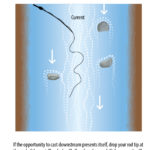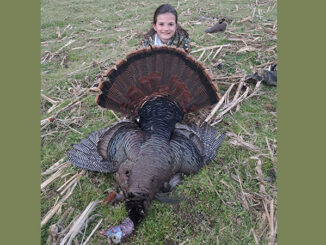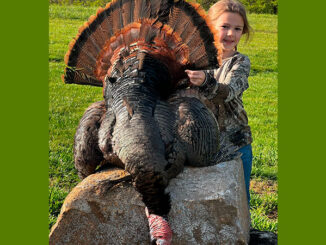
• Wade upstream, not downstream. In heavily stocked rivers with little or no wild-trout population, hatchery fish can be taken by wading downstream. The smarter spawned and wild trout are not quite as susceptible. Wading kicks up silt and knocks stones together, no matter how stealthy you are. Use the water flow to your advantage. It’s harder to set the hook when wading and casting upstream, but the difference in fish that you can interest with your fly will more than make up for a few missed strikes.
• Read the water before casting. If you are not casting to a specific fish, know what parts of the water will produce before you churn the river with your fly line. If you are casting to water protected by a rock, anticipate the drag that will come from the swifter water beside it and make your cast appropriately. If you are attempting to drop your nymph into a hole, anticipate the mend you will need to make to keep the drift drag free.
• Learn to cast with the fly in your hand. The “pop” cast is perfect for working small pockets of water, especially for native trout in the Davidson’s tributaries. Simply grasp the fly by the bend in the hook and gently cast. You’ll have to practice to get the hang of releasing the fly at the right time, and you may nick yourself a time or two. However, it’s a technique that can make the difference. Similarly, a “bow-and-arrow” cast involves using the flex of the rod to cast the fly and leader when you release the bend. The only limitation is that you can only cast roughly the length of the rod with a bow and arrow cast. This may be perfect for tight water, but the pop cast has more uses.
• Learn to roll-cast and roll-mend. Casting with the fly in front of you is not an easy technique to master, but it has its place in this fishery. If you can roll-cast, you’ll never lose flies to trees behind you, and you won’t lose time retrieving your fly line from those trees. Mending with a roll will prolong drifts over productive water. Each rod rolls differently, so you’ll need to spend time before you hit the river finding out exactly what your capabilities are. As a rule, slower action rods, especially fiberglass ones, roll-cast and roll-mend better than faster ones.








Be the first to comment